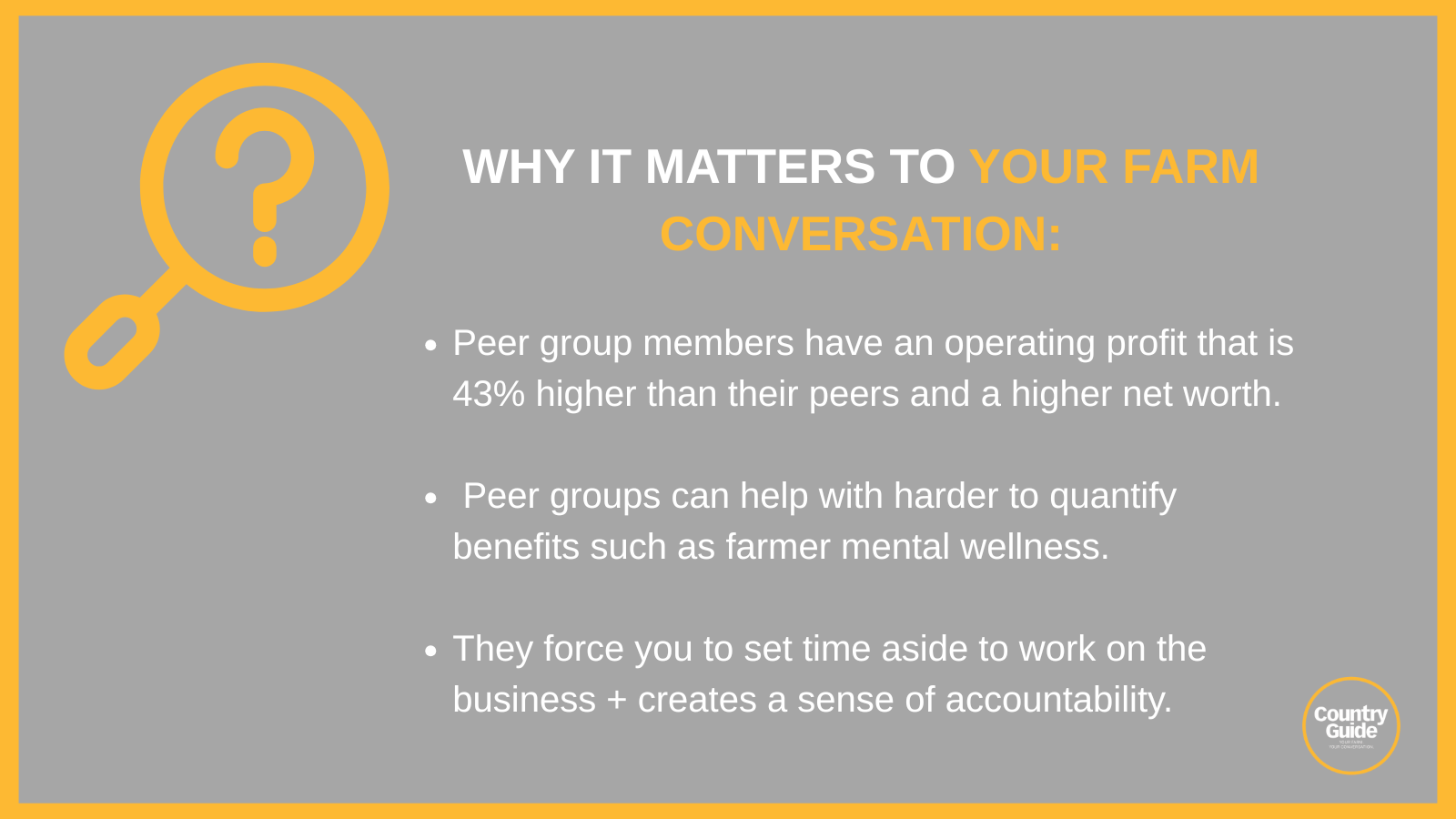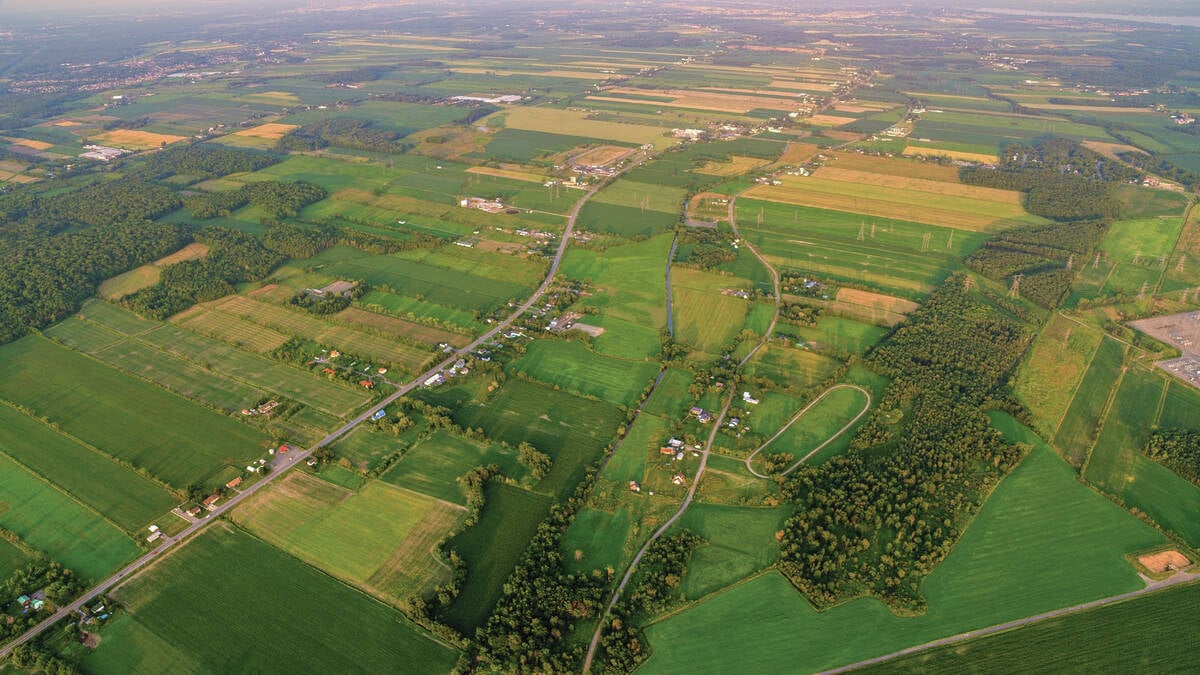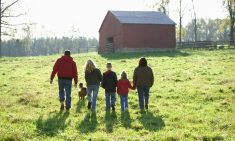Whether chatting across the fence, at an event or at the coffee shop, farmers have always improved their operations by learning from one another.
Producer peer groups can take that learning to an all-new level by creating a structure and a focus through which farmers can share their professional knowledge and experience.
Kim Gerencser, a farm financial consultant in Regina, Sask., set up his first peer group 15 years ago. The core group continues to meet all these years later which, he says, is a testament to the value of peer groups for farmers.
Read Also

What to consider when setting up farm-related business ventures
Things to consider before launching a farm-adjacent side business.
Heather Watson, executive director of Farm Management Canada (FMC), says the roots of formalized peer groups go back to France after the Second World War where farmers came together to learn from one another and to improve performance with the support of agronomic or economic advisors.
In 1968, Quebec adopted a peer group program which eventually expanded to include environmental, production and labour performance in addition to financial performance.
Peer groups are now found throughout Canada and Watson says they are as relevant as ever.

Although peer groups haven’t been studied extensively, FMC points to a study in Quebec which shows farm businesses that have been members of management groups for several years have an operating profit that is 43 per cent higher, a return on assets that is 2.2 per cent higher and a higher net worth.
However, these statistics don’t capture the positive impact of peer groups on harder-to-quantify benefits such as farmer mental wellness.
Watson says that when a farmer is part of a formalized peer group, “you know that you’re not alone in terms of your challenges, struggles and curiosities.”
Sara Chambers, an HR specialist with Backswath Management Consultants in Winnipeg, Man., has been managing peer groups for five years. She’s witnessed first-hand how peer groups make it possible for farmers to connect at a deeper level. In one instance, the group rallied around a farmer who said he was struggling and, in the process, realized that it was a safe space for anyone to share.
How peer groups work
Typically, a professional advisor leads a group of farmers who meet on a regular basis to exchange insights, compare performance and improve their operations. Farmers gain an understanding of how their farm operation’s performance ranks against others and are also inspired by other members and by knowledge coming from the advisor.
In Watson’s opinion advisors are essential to keep the momentum of the group going, to bring in additional experts as needed, and to share their knowledge and experience gleaned by working with other farmers.
Gerencser says any topic related to farming is fair game in his groups, but a skilled facilitator keeps the meetings on track and discussions productive.
He likes to build enough time into the agenda so there is space for conversations to evolve organically. The members of one group, for example, once spent 90 minutes discussing the common challenge of keeping crews fed at harvest time.
Concerns about competition can be addressed by selecting members who aren’t in the same production sector or who don’t farm in the same geographic area. Both Gerencser and Chambers recruit from several provinces, being careful not to put people who farm near each other together so that members can share more openly.
While farmers usually have their advisory network of veterinarians, agronomists and other experts, Chambers says that because members of a group have no financial stake in the advice they give, they add to the farmer’s advisory network in a different way.
Chambers says another advantage of peer groups is that it forces farmers to set aside time to work on business management, something they often tell her they don’t do. There is also accountability when agenda items are reviewed at subsequent meetings.
How to pick a peer group
Gerencser cautions that a peer group isn’t a good fit for everyone.
“Some people are less willing to open up. That’s not a criticism but you need to be willing to share,” he says.
Trust among members and the facilitator is critical. Before joining a group, you should ensure the confidentiality of the group and that your information will never be sold, says Gerencser.
Watson recommends verifying that members have been selected to ensure production sector and/or geographical separation to limit feelings of competition.
Make sure the group aligns with your goals. Gerencser notes that some groups are just for “general chit chat.” Both he and Chambers run different groups for the established senior generation and the younger emerging leaders on the farm. Gerenceser also builds groups based on farm size.
Chambers agrees that it’s important to do your homework and choose a group that is a good fit. “Don’t just sign up with the one your accountant suggests,” she says. “Screen the provider. Some have launched as a way to get farmers in the door,” noting that the peer groups Backswath operates are separate from their consulting services.
Ensure that the group has a skilled facilitator with sufficient knowledge of the industry. “The facilitator doesn’t have to have all the answers, but they do have to ask the right questions,” advises Gerencser. Third-party specialists can be brought in at the request of the group to provide additional expertise.
Other personal considerations include making sure you will be able to commit the necessary time and travel to reap the benefits of participation.
Chambers says the senior farmer group she runs meets three times per year in person and the “next gen” group meets three times per year in person plus once online. At least one participant per farm is expected to attend at least two meetings per year.
In addition to being able to spare the time to participate, make sure you know how much you will need to budget for membership fees, meals, travel and accommodations.
Other questions to ask
What size is the group? Chambers thinks that the sweet spot for groups to have enough time for everyone to share is about 10 farms with up to three participants attending per farm.
How do you know if the time is right for you to join a peer group? In Watson’s opinion, a farmer would benefit from joining a group if they find it hard to work on the business; feel stuck or unsure about next steps; want to benchmark the farm’s performance to find out where they’re succeeding and where they could improve; are seeking open and honest feedback; feel isolated in their role and are looking to connect and share with others to learn from; or they think they could benefit from more structure and accountability in running the farm.
Starting your own group
For some farmers, joining a peer group with a professional facilitator may be out of reach at the present time.
But it’s still possible to gain some of the benefits of a peer group by starting your own. Farm Credit Canada has put together a Peer Group in a Box resource with tips for starting your own group.
An industry meeting or event, such as a field day or training workshop, can often be a catalyst for creating a peer group. Developing a common vision and putting it in writing based on the expectations and aspirations of group members will ensure that participants agree on the focus. Goals and objectives for the group will flow from this broad vision.
















